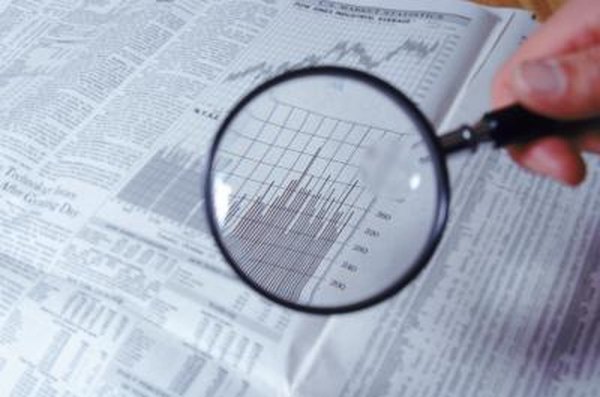What Is a Fair Return on Equity Investments?
There's no universal fair return on equity investments.
John Foxx/Stockbyte/Getty Images
The rate of return on equity investment is determined by the type of investment, the riskiness of the investment and just plain chance. Bonds have lower risk levels and usually offer a lower rate of return compared to stocks. Stocks generally offer higher rates of return but are subject to stronger fluctuations compared to bonds.
Risk and Return
Finance experts agree that the best indicator of an investment's return is its risk level. This is a common sense theory that's fairly intuitive. If someone offers a 5 to 6 chance of a $100 return on a $10 investment, most investors would quickly take up the offer. If the same person offers a 1 to 6 chance of a $100 return and a 5 to 6 chance of a zero return, less investors would take part.
Risk-Free Rate
Investors usually expect to get a return on equity that's higher than the current risk-free rate of return. According to economist Richard Brealey in "Principles of Corporate Finance," investors usually peg the risk-free rate of return at the current interest rate on U.S. Treasury bills. "Risk free" is a bit of a misnomer since every investment has some small amount of risk. However, U.S. Treasury bills are a short investment and are backed by the U.S. government, so there's very little chance of default.
Capital Asset Pricing Model
Supporters of the Capital Asset Pricing Model believe that portfolio risk levels are the best determinate of risk. The Capital Asset Pricing Model instructs users to multiply the portfolio beta by the market risk premium to determine the expected risk premium. Beta is a measure of the stock fluctuation relative to other stocks, and this measure determines the total portfolio sensitivity to market changes. A higher beta means that there's more fluctuation in the portfolio, which means a higher risk level and a higher rate of return. If an investor has a portfolio or individual equity investment with a beta higher than the market, they should expect to get a better return.
Three Factor Model
Critics of the capital asset pricing model say that it relies too heavily on a single factor. Professors Eugene Fama and Kenneth French developed a "three factor model" to mitigate this problem. The first factor is the same one the capital asset pricing model uses, the portfolio beta. Fama and French point out that small stocks are riskier, so the size of the stock should be taken into account. The model also takes the book-to-market ratio into account because stocks with high ratios have generated higher returns compared to their low ratio counterparts.
References
- Portfolio Solutions: Understanding Risk: Fama-French Three Factor Model
- CAPM: The First Factor of Investing
- Principles of Corporate Finance; Brealey, Richard et al
Writer Bio
Based in San Diego, Calif., Madison Garcia is a writer specializing in business topics. Garcia received her Master of Science in accountancy from San Diego State University.

